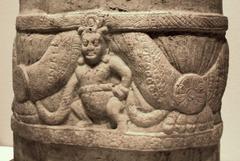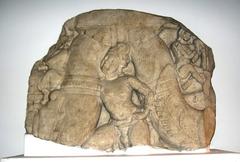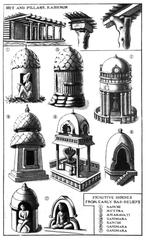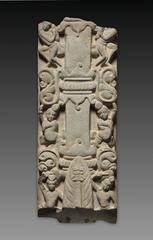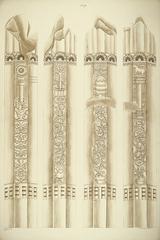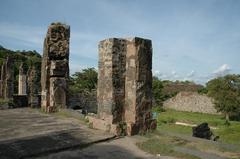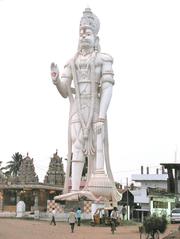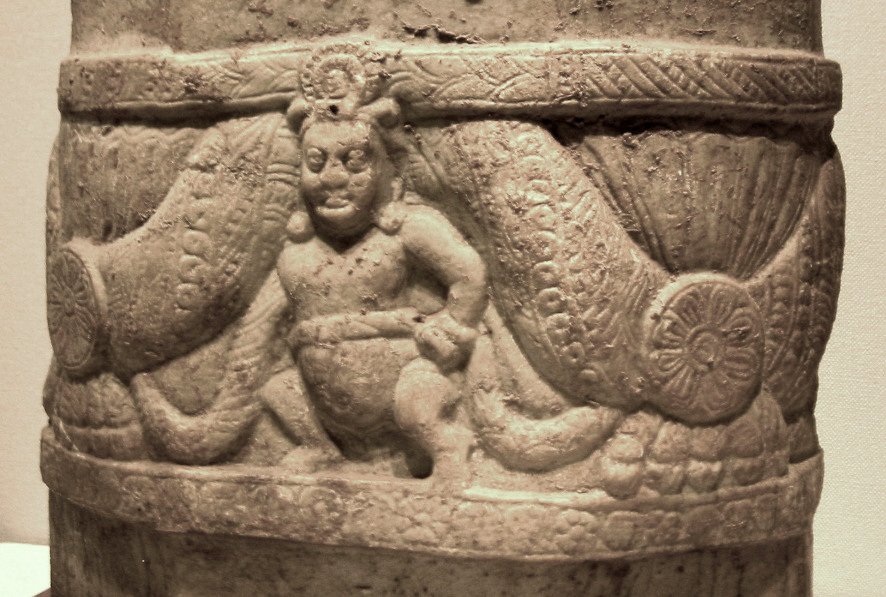
Visiting Amaravathi Maha Chaitya: Hours, Tickets, and Historical Sites
Publication Date: 18/07/2024
Introduction to Amaravathi Maha Chaitya
Today, Amaravathi Maha Chaitya attracts visitors from around the world who come to explore its rich history, religious significance, and architectural beauty. This comprehensive guide will provide you with all the essential information you need for a memorable visit, including visiting hours, ticket prices, travel tips, and nearby attractions. Whether you are a history enthusiast, a spiritual seeker, or a curious traveler, Amaravathi Maha Chaitya offers a unique glimpse into India’s ancient past and Buddhist heritage.
Contents Overview
- Introduction
- Early Beginnings and Royal Patronage
- The Rise of a Magnificent Monument
- A Hub of Buddhist Learning and Pilgrimage
- Decline and Rediscovery
- Archaeological Excavations and Restoration Efforts
- Architectural Significance
- Religious and Cultural Significance
- Visitor Information
- Visiting Hours
- Tickets
- Travel Tips
- Nearby Attractions
- Accessibility
- Special Events and Guided Tours
- Photographic Spots
- FAQ
- Conclusion
Early Beginnings and Royal Patronage
The origins of Amaravathi Maha Chaitya can be traced back to the 3rd century BCE, during the reign of Emperor Ashoka of the Mauryan dynasty, a fervent patron of Buddhism. He commissioned the construction of numerous stupas across his empire, and Amaravathi was chosen as one of the prominent sites. Initially, it was a modest structure made of brick, enshrining relics of the Buddha.
The Rise of a Magnificent Monument
The stupa’s most glorious period unfolded during the reign of the Satavahana dynasty in the 2nd and 1st centuries BCE. Recognizing the religious and cultural importance of Amaravathi, the Satavahana rulers undertook a massive expansion and beautification project. The original brick structure was encased in white marble, transforming it into a magnificent edifice. Intricate carvings depicting scenes from the Buddha’s life, Jataka tales, and stories from Buddhist scriptures adorned the stupa’s railings, gateways, and drum.
A Hub of Buddhist Learning and Pilgrimage
Amaravathi Maha Chaitya became a renowned center of Buddhist learning and pilgrimage during this period. Monks and scholars from far and wide flocked to the site, drawn by its sanctity and the opportunity to study and practice Buddhism. The stupa complex grew to encompass monasteries, shrines, and other structures, accommodating the needs of the burgeoning monastic community and pilgrims.
Decline and Rediscovery
With the decline of Buddhism in India and the rise of other religions, Amaravathi Maha Chaitya gradually fell into disuse and decay. By the 14th century, it lay in ruins, its former glory hidden beneath layers of earth and vegetation. It was not until the late 18th century that the site was rediscovered, capturing the attention of British archaeologists and historians.
Archaeological Excavations and Restoration Efforts
Extensive excavations conducted in the 19th and 20th centuries unearthed the remnants of the grand stupa and its surrounding structures. The exquisite marble carvings, many of which were removed and are now housed in museums in India and abroad, provided invaluable insights into the art, architecture, and religious practices of the time. Subsequent restoration efforts have aimed to preserve the site and showcase its historical significance.
Architectural Significance
Amaravathi Maha Chaitya stands as a masterpiece of Buddhist architecture, representing a unique blend of early and later styles. The stupa’s design, characterized by its hemispherical dome (anda) resting on a cylindrical base (medhi), reflects the traditional form. However, the elaborate carvings and gateways, with their intricate details and narrative scenes, showcase the evolution of Buddhist art and architecture.
Religious and Cultural Significance
As a prominent Buddhist pilgrimage site for centuries, Amaravathi Maha Chaitya holds immense religious and cultural significance. The stupa’s association with the Buddha and the presence of relics made it a sacred space for devotees to pay homage and seek blessings. The site’s rich history and the stories depicted in its carvings continue to inspire and resonate with people from all walks of life.
Visitor Information
Visiting Hours
The site is open daily from 9:00 AM to 5:00 PM.
Tickets
Entry fees are INR 20 for Indian citizens and INR 200 for foreign tourists. Children below 15 years can enter for free.
Travel Tips
Wear comfortable footwear as the site involves a fair amount of walking. Carry water and sun protection, especially during summer months.
Nearby Attractions
Visit the Amaravathi Museum, which houses many artifacts from the site, and the Krishna River, which offers scenic views.
Accessibility
The site is partially accessible to visitors with disabilities. However, some areas may require assistance.
Special Events and Guided Tours
The site occasionally hosts special events, lectures, and guided tours that offer deeper insights into its history and significance. Check the official website or local tourism boards for updated information.
Photographic Spots
Capture the beauty of Amaravathi Maha Chaitya by visiting the panoramic viewpoints around the complex, especially during sunrise or sunset when the light accentuates the intricate carvings.
FAQ
-
What is the best time to visit Amaravathi Maha Chaitya?
- The best time to visit is between October and March when the weather is pleasant.
-
Are there any facilities for tourists?
- Yes, there are restrooms, drinking water facilities, and a small café near the entrance.
-
Can we take photographs inside the complex?
- Yes, photography is allowed, but the use of tripods may require special permission.
Conclusion
Amaravathi Maha Chaitya stands as a testament to the enduring legacy of Buddhism in India and the artistic brilliance of ancient Indian civilization. Its history, spanning over two millennia, reflects periods of grandeur, decline, rediscovery, and ongoing preservation efforts. Today, the site stands as a reminder of the power of faith, the beauty of art, and the importance of preserving our cultural heritage for generations to come. Visit Amaravathi Maha Chaitya to explore its rich past and experience its serene beauty firsthand.
